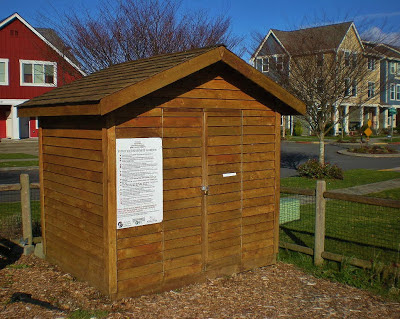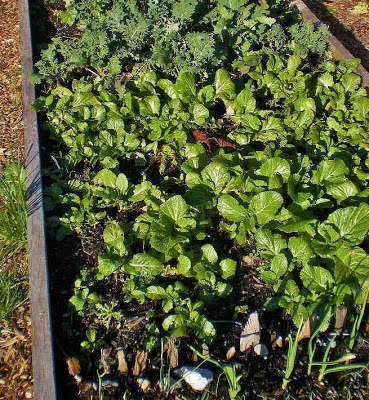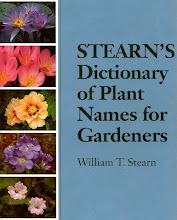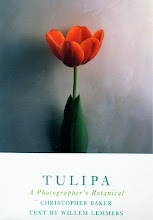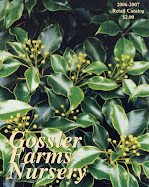Plot B29B March 2013
Luzula sylvatica 'Aurea' in Plot B29B March 2013
Ribes sanguineum in the ornamental border at Bradner Gardens Park March 2013
This friendly cat lives across the street from the park. She ran up to me, as she had before.
The meeting room at Bradner Gardens Park March 2013
Click here for more pictures of Bradner Gardens Park.
Click here for the Bradner Blog.
I attended a meeting at Bradner Gardens Park on March 9, 2013. I was given a tour of the facilities beforehand. About 30 people came to the meeting. The room was nice, but chilly with the huge sliding door open. I heard a number of speakers who were in charge of this or that. There was a lot of emphasis on completing & recording volunteer hours. In addition to the fee, everyone is required to do 8 hours of work, outside their own plot, during the season. I signed up to work in the ornamental border. I was there 2 hours, which did not count as volunteer work, unfortunately.
I planted the first vegetable seeds in plot B29B on March 26, 2013. Those were Beta vulgaris ‘Perpetual’ (Swiss Chard) Brassica oleracea ‘Danish Ballhead’ (Cabbage) Brassica oleracea ‘Gai Lan’ (Chinese Broccoli) Brassica oleracea ‘Yu Choi’ (Chinese Greens) Brassica oleracea ‘Vates’ (Collards) Daucus carota ‘Merida’ (Carrot) Daucus carota ‘Purple Sun’ (Carrot) & Raphanus sativus var. longipinnatus ‘Minowase’ (Daikon). In southeast Seattle, Asian vegetables are common.
I was very happy to get half of a plot in November 2012 after waiting for only 3 months. It is located on Mt Baker Ridge, 1.6 miles from my former home in the Mt Baker neighborhood & 1.8 miles from my future home at Rainier Vista in the Rainier Valley, but 4.1 miles from my temporary home at The Station at Othello Park. I moved a number of perennials to plot B29B & planted a shipment of bulbs on November 15, 2012.
Bradner Gardens Park has perhaps the nicest p-patch in Seattle. There is an excellent view of Downtown Seattle. The tool shed is spacious & filled with tools. In the same structure, there is also a restroom with tile-mosaic walls, a kitchen & a meeting room with a fireplace. The 1.6 acre park contains a pavilion, a native plant garden with a bioswale & seasonal pond, an ornamental border & a basketball court. From September of 1970 to June of 1971, I was in the 6th grade at John Muir Elementary School Annex on the property that became Bradner Gardens Park. The baby boom caused my to become so crowded that the 5th & 6th grades were temporarily relocated there in portable classrooms.
Below is the plant list for plot B29B. I drew a plan for a formal, nearly symmetrical perennial & vegetable garden. The plot is said to be 100 square feet, but is really about 60 square feet, not that I'm complaining.
Luzula sylvatica 'Aurea' in Plot B29B March 2013
Ribes sanguineum in the ornamental border at Bradner Gardens Park March 2013
This friendly cat lives across the street from the park. She ran up to me, as she had before.
The meeting room at Bradner Gardens Park March 2013
Click here for more pictures of Bradner Gardens Park.
Click here for the Bradner Blog.
I attended a meeting at Bradner Gardens Park on March 9, 2013. I was given a tour of the facilities beforehand. About 30 people came to the meeting. The room was nice, but chilly with the huge sliding door open. I heard a number of speakers who were in charge of this or that. There was a lot of emphasis on completing & recording volunteer hours. In addition to the fee, everyone is required to do 8 hours of work, outside their own plot, during the season. I signed up to work in the ornamental border. I was there 2 hours, which did not count as volunteer work, unfortunately.
I planted the first vegetable seeds in plot B29B on March 26, 2013. Those were Beta vulgaris ‘Perpetual’ (Swiss Chard) Brassica oleracea ‘Danish Ballhead’ (Cabbage) Brassica oleracea ‘Gai Lan’ (Chinese Broccoli) Brassica oleracea ‘Yu Choi’ (Chinese Greens) Brassica oleracea ‘Vates’ (Collards) Daucus carota ‘Merida’ (Carrot) Daucus carota ‘Purple Sun’ (Carrot) & Raphanus sativus var. longipinnatus ‘Minowase’ (Daikon). In southeast Seattle, Asian vegetables are common.
I was very happy to get half of a plot in November 2012 after waiting for only 3 months. It is located on Mt Baker Ridge, 1.6 miles from my former home in the Mt Baker neighborhood & 1.8 miles from my future home at Rainier Vista in the Rainier Valley, but 4.1 miles from my temporary home at The Station at Othello Park. I moved a number of perennials to plot B29B & planted a shipment of bulbs on November 15, 2012.
Bradner Gardens Park has perhaps the nicest p-patch in Seattle. There is an excellent view of Downtown Seattle. The tool shed is spacious & filled with tools. In the same structure, there is also a restroom with tile-mosaic walls, a kitchen & a meeting room with a fireplace. The 1.6 acre park contains a pavilion, a native plant garden with a bioswale & seasonal pond, an ornamental border & a basketball court. From September of 1970 to June of 1971, I was in the 6th grade at John Muir Elementary School Annex on the property that became Bradner Gardens Park. The baby boom caused my to become so crowded that the 5th & 6th grades were temporarily relocated there in portable classrooms.
Below is the plant list for plot B29B. I drew a plan for a formal, nearly symmetrical perennial & vegetable garden. The plot is said to be 100 square feet, but is really about 60 square feet, not that I'm complaining.
Plant List
Agapanthus campanulatus: 6
Ajuga reptans ‘Black Scallop’ (Carpet Bugle): 4
Allium cristophii (Star of Persia): 10 bulbs
Allium karataviense: 10 bulbs
Allium unifolium: 50 bulbs
Beta vulgaris ‘Perpetual’ (Swiss Chard): seed
Brassica oleracea ‘Gai Lan’ (Chinese Broccoli): seed
Brassica oleracea ‘Danish Ballhead’ (Cabbage): 4 from seed
Brassica oleracea ‘Yu Choi’ (Chinese Greens): seed
Brassica oleracea ‘Vates’ (Collards): 4 from seed
Campanula medium (Canterbury Bells): 4
Campanula portenschlagiana (Dalmation Bellflower): 4
Clematis integrifolia: 4
Cucurbita pepo ‘Sunburst': 2 from seed
Daucus carota ‘Merida’ (Carrot): seed
Daucus carota 'Purple Sun' (Carrot): seed
Fragaria vesca (Woodland Strawberry): 12
Geranium sanguineum (Bloody Cranesbill): 4
Hakonechloa macra ‘Aureola’ (Japanese Forest Grass): 4
Hemerocallis ‘Bela Lugosi’ (Daylily): 1
Hemerocallis 'Root Beer' (Daylily): 1
Hyacinthus ‘Peter Stuyvesant’ (Hyacinth): 8
Iris hartwegii: 4
Lamium maculatum ‘Beacon Silver’: 4
Lilium auratum (Gold Band Lily): 5
Luzula sylvatica ‘Aurea’: 2
Nectaroscordum siculum: 10
Paeonia veitchii: 1
Penstemon x mexicali: 8
Phaseolus vulgaris ‘Serengeti’ (Bush Bean): seed
Raphanus sativus var. longipinnatus ‘Minowase’ (Daikon): seed
Scilla peruviana: 5
Ajuga reptans ‘Black Scallop’ (Carpet Bugle): 4
Allium cristophii (Star of Persia): 10 bulbs
Allium karataviense: 10 bulbs
Allium unifolium: 50 bulbs
Beta vulgaris ‘Perpetual’ (Swiss Chard): seed
Brassica oleracea ‘Gai Lan’ (Chinese Broccoli): seed
Brassica oleracea ‘Danish Ballhead’ (Cabbage): 4 from seed
Brassica oleracea ‘Yu Choi’ (Chinese Greens): seed
Brassica oleracea ‘Vates’ (Collards): 4 from seed
Campanula medium (Canterbury Bells): 4
Campanula portenschlagiana (Dalmation Bellflower): 4
Clematis integrifolia: 4
Cucurbita pepo ‘Sunburst': 2 from seed
Daucus carota ‘Merida’ (Carrot): seed
Daucus carota 'Purple Sun' (Carrot): seed
Fragaria vesca (Woodland Strawberry): 12
Geranium sanguineum (Bloody Cranesbill): 4
Hakonechloa macra ‘Aureola’ (Japanese Forest Grass): 4
Hemerocallis ‘Bela Lugosi’ (Daylily): 1
Hemerocallis 'Root Beer' (Daylily): 1
Hyacinthus ‘Peter Stuyvesant’ (Hyacinth): 8
Iris hartwegii: 4
Lamium maculatum ‘Beacon Silver’: 4
Lilium auratum (Gold Band Lily): 5
Luzula sylvatica ‘Aurea’: 2
Nectaroscordum siculum: 10
Paeonia veitchii: 1
Penstemon x mexicali: 8
Phaseolus vulgaris ‘Serengeti’ (Bush Bean): seed
Raphanus sativus var. longipinnatus ‘Minowase’ (Daikon): seed
Scilla peruviana: 5




















